We love tempeh and had the idea, what if we ferment soybean noodles? If we layer the strands of pasta to all go in the same direction and mimic the fibers in meat, could we make a fermented plant-based piece of meat?
Our first few attempts all failed due to the pasta either being too wet, the ferment overheating, but on the third time we got a result, and it shocked us.
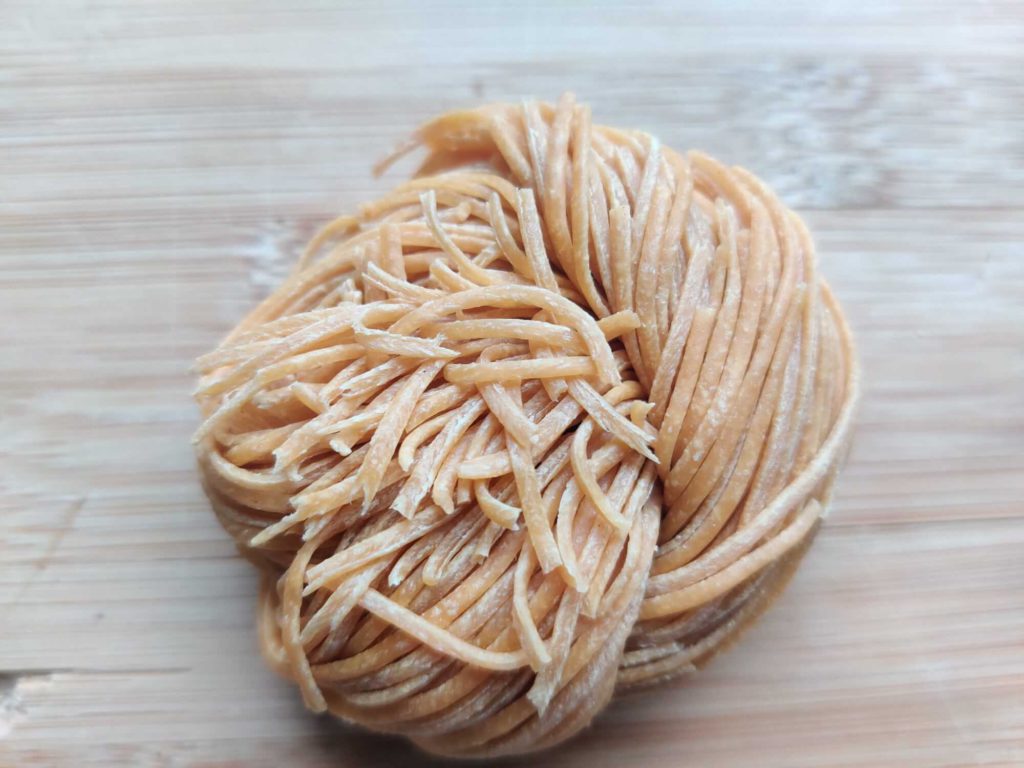
Soybean pasta is made from organic soybeans that are milled, extruded and then dried. The soybean pasta comes in different colors and we started off with using yellow soybean noodles. We love soybean pasta for its amazing nutrition content, per 100g it contains 41.6 grams of protein, 21 grams of carbohydrates and 20 grams of dietary fibers. For us it’s the high protein to replace animal protein and the dietary fibers to add the texture we are looking for.
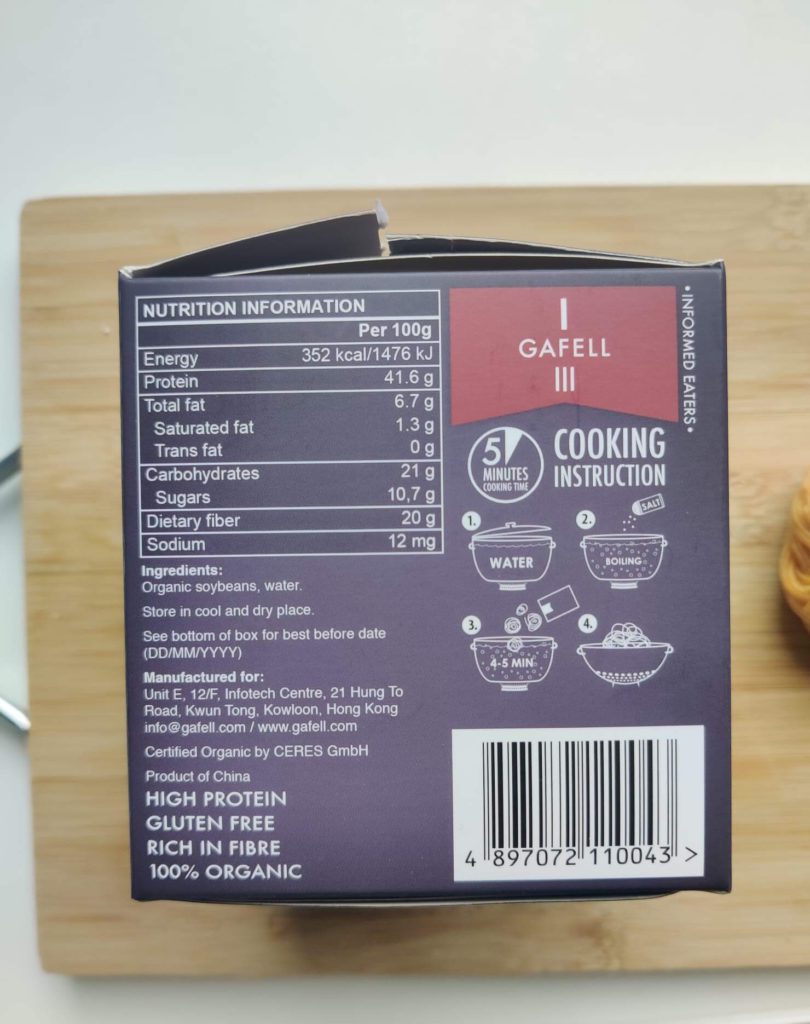
Cooked soybean noodles are a great replacement for traditional pasta since it’s both high in protein and low in carbs. Taste wise it has a bit of a beany flavor that puts some people off and is the major drawback. In previous experiments have tried lacto-fermenting both bean pasta and TVP with beetroots to remove that beany taste and add some color with mixed results.
To ferment the soybean noodles we used
Ingredients
- Gafell Soybean Noodle Cake about (40 grams dry weight)
- Sugar 8 grams
- Vinegar 5 grams
- Rhizopus oligosporus (tempeh starter) 3 grams
Equipment
HakkoBako Pro Fermentation Chamber
Method
We began by soaking the soybean noodles in boiling water for 2-3 minutes. In previous attempts we have both boiled and soaked the pasta overnight, however getting the moisture content right is probably the hardest part of this. Too wet and it will spoil during fermentation, and too dry nothing will happen.
After soaking, we drained the noodles, dried them off with kitchen towels, and then set the fermentation chamber at 50°C to let the noodles dry out for 10 minutes.
Then in a mixing bowl we added noodles, sugar to feed and kickstart the ferment, vinegar to lower the pH, and sprinkled over Rhizopus oligosporus to lightly coat the noodles.
We then placed the noodles in a plastic bag, pierced the bag with a fork and wrapped it tightly and covered with a rubber band.
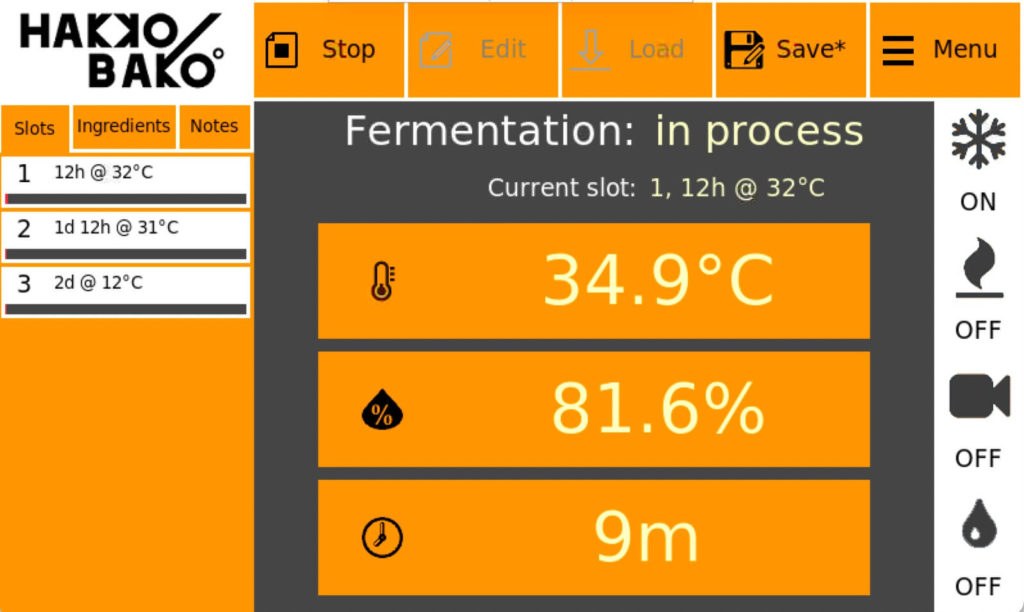
We placed the bag in our fermentation chamber, added water to the bottom of the chamber to reach a humidity of around 80% RH. The temperature was set to 32°C for the first 12 hours to kick start the fermentation process and then reduced to 31°C and we let it ferment for 36 hours. We conducted this experiment over the weekend so after 48 hours had passed we set the chamber to cool to 12°C to slow the fermentation process until we could get back to the office on Monday.

Coming in and checking on the chamber after the weekend was exciting and opening the chamber we were hit by the smell of funky old sneakers and mushrooms. It’s not surprising as both mushrooms and Rhizopus oligosporus are grown from spores of fungi.
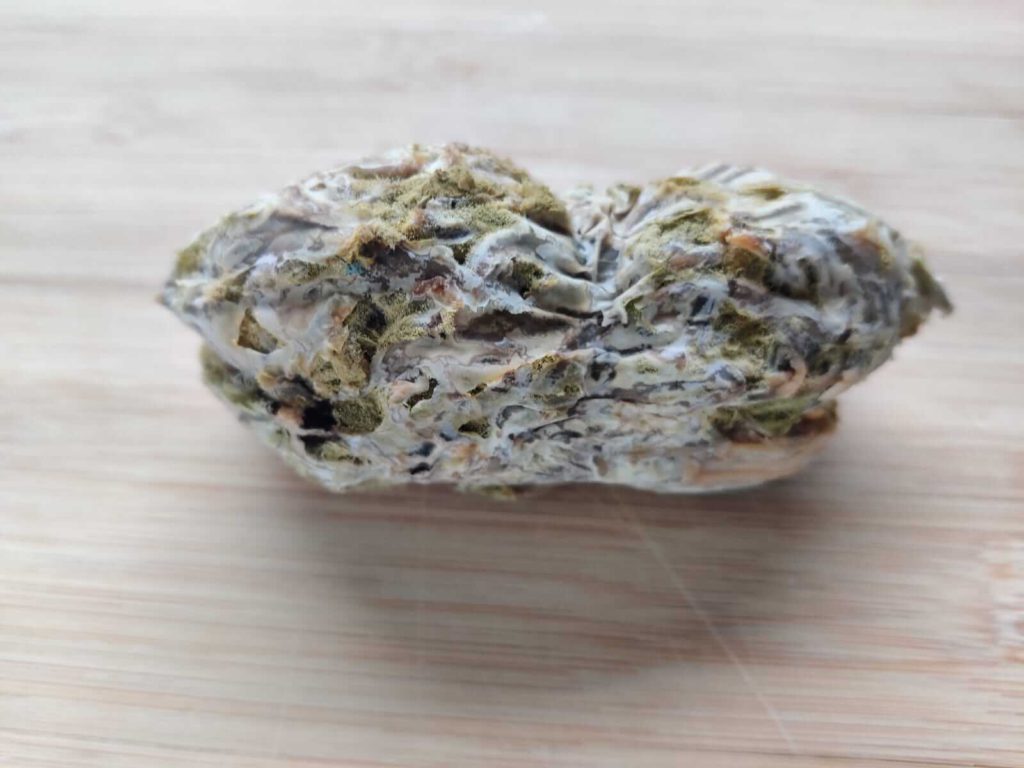
We were thrilled when we saw that fermentation has worked and the strands of pasta were bound together into a dense log. Success. As we prepared the pasta we were not able to get all strands to perfectly align in the same direction but surprisingly it didn’t matter.
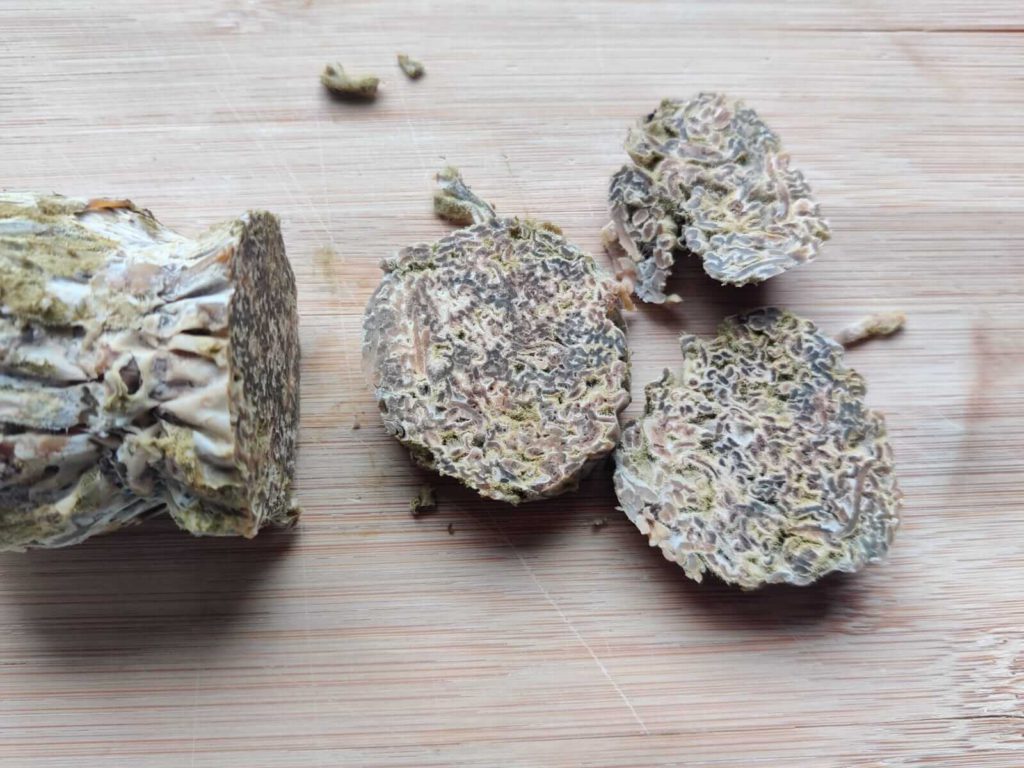
Cutting into the log we were surprised to find that the strands bound together and uncooked looked a bit like shaved fresh truffle.
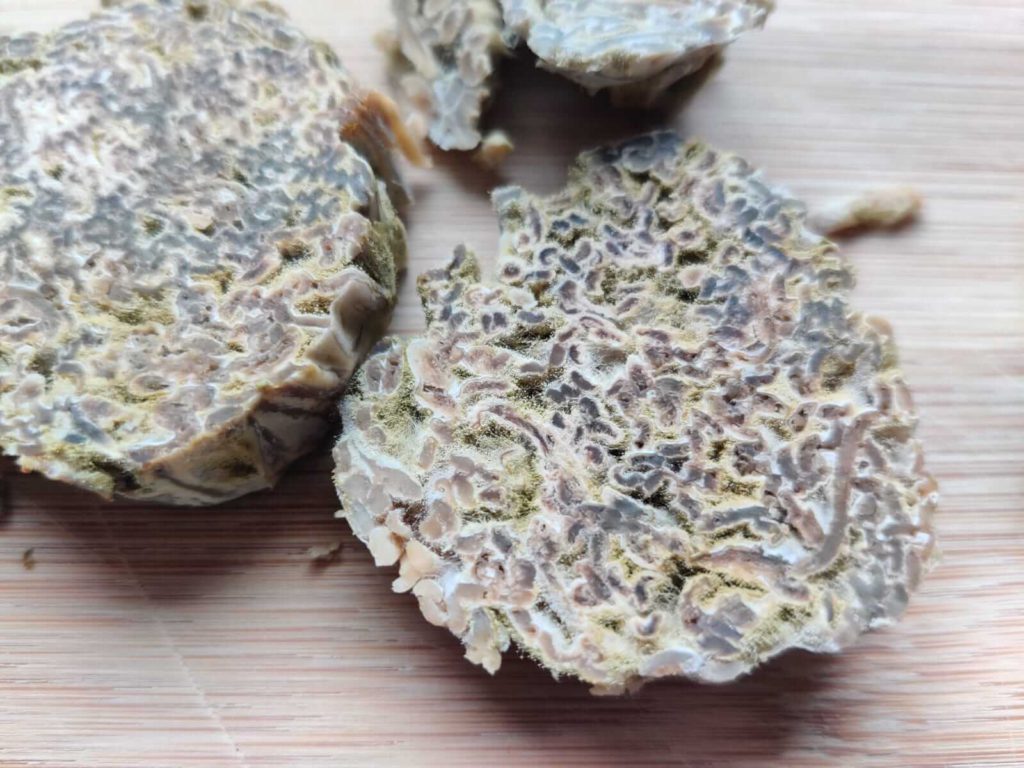
Cooking it up we seasoned it with sea salt and seared it as a steak with olive oil for 2-3 minutes per side. After cooking it firms up and is remarkably similar to meat. As for the taste, it taste like mutton. That soybean-beany flavor and scent that the soybean noodles usually have is gone and the entire log has transformed into something completely different.
Fermenting it over the weekend brought the fermentation process a bit further that we had initially wanted it to, and just like with tempeh the older it is the funkier and more of flavor it gets. As with other fermented foods like cheese and wine it may be an acquired taste, but we as fermentation nerds think it tastes amazing. Fried up with cumin and spices or in a mutton biryani it’s gonna be an incredible dish.
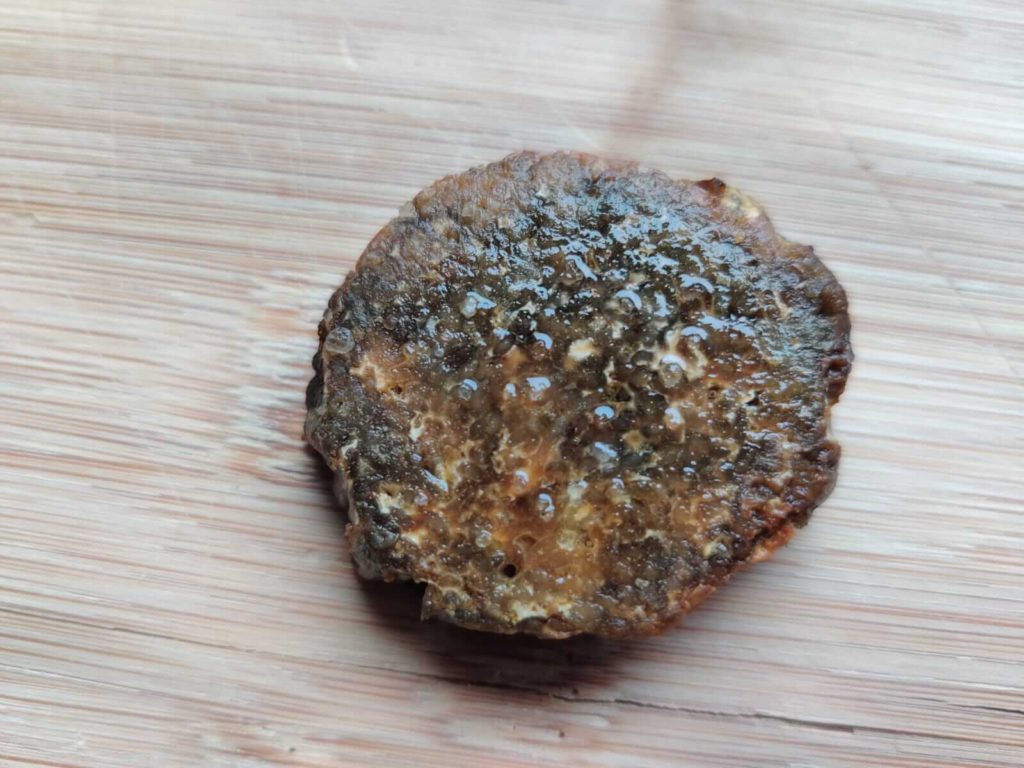
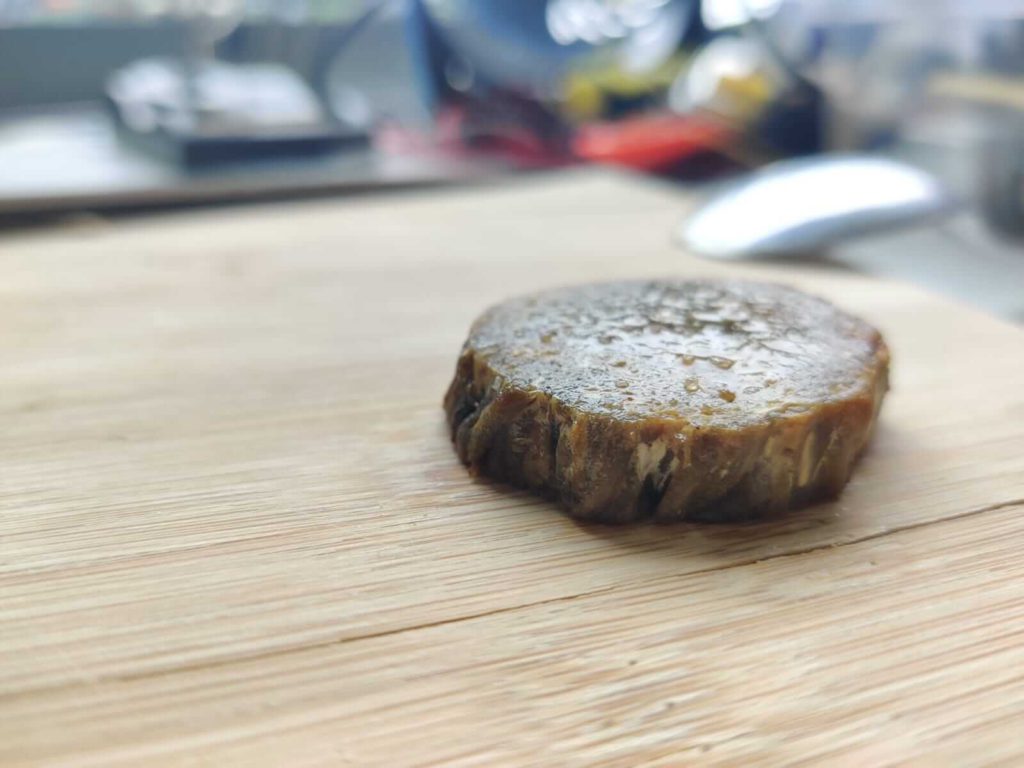
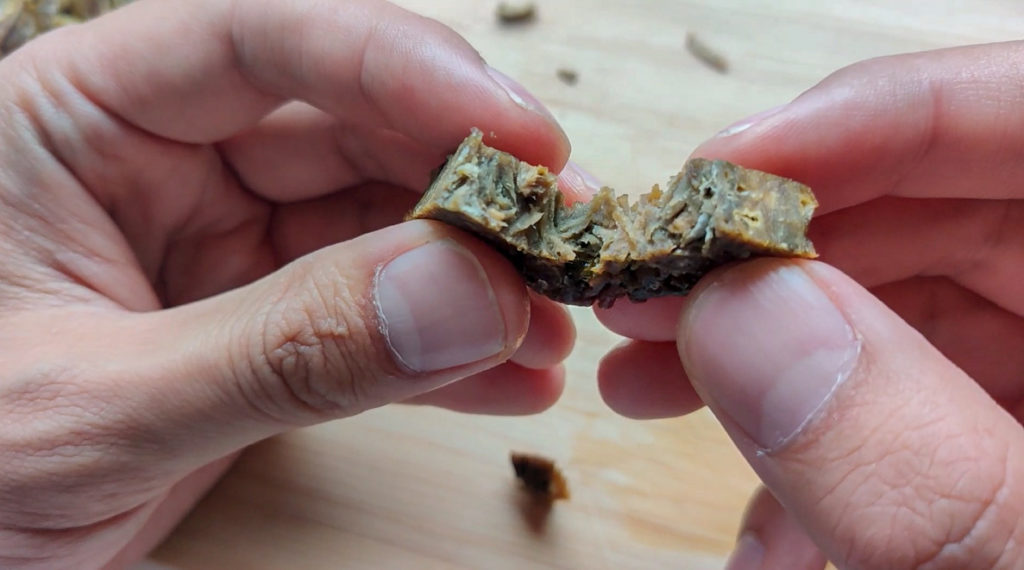
Next up we will try fermenting black soybean noodles, to see if we can get the color closer to mutton and also both shorten and lengthen the fermentation time to fine to see how we can improve the taste.
by Tommy Leung & Bharath PRS
